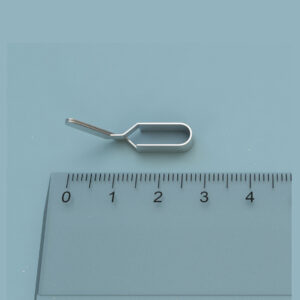$990.00
Path Regularity Mazes are utilized for evaluating learning and memory in bees. These mazes are constructed from vertically oriented cylinders covered with transparent perspex sheets. The maze configurations are created using these cylinders as modules, each featuring three holes positioned midway along its wall.
Bees navigate these mazes by entering a cylinder through one hole and potentially exiting through one of two other holes. One exit hole continues the correct path through the maze, while the other leads to a dead end cylinder. Bees must memorize the sequence of turns throughout the maze.
The last cylinder on the correct path houses a feeder containing sugar water, which bees can consume freely. Once fed, bees are released from this cylinder by temporarily lifting the transparent cover.

MazeEngineers empowers preclinical neuroscience research with meticulously designed, customizable behavioral apparatuses. From manual classic mazes to fully automated smart systems, we provide the tools scientists need to capture high-quality, reproducible data for studies on learning, memory, anxiety, and depression.



Features |
Diameter of cylinders: 22.5cm |
Height of cylinders: 25cm |
Diameter of holes in cylinder: 4cm |
Distance of holes from the floor: 12.5cm |
Position of exit hole away from straight direction: 45° |
Position of entrance hole away from exit holes: 135° |

The Path Regularity Maze serves as a research tool to investigate navigational strategies and orientation in honeybees. This paradigm explores maze-learning through four distinct types: constant-turn, zig-zag, irregular, and variable irregular mazes.
While vertebrates like rats have been extensively studied for their use of colors or marks in labyrinth navigation, the application of these methods to honeybees remains less explored. Shaowu, Akiko, and Mandyam (2000) introduced the Path Regularity Maze to determine if honeybees can distinguish between mazes with regular patterns and those without markings across various configurations.
In the Path Regularity Maze setup, cylinders feature entrance and exit holes. Bees flying the correct path enter a cylinder through one hole and exit through one of two possible holes. One exit hole continues the correct route through the maze, while the other leads to a dead end. Following the correct path leads the bee to the final cylinder containing a reward.
The setup comprises a series of vertically-oriented cylinders (diameter: 22.5cm, height: 25cm) utilized as building blocks for maze construction. Each cylinder is equipped with three holes (diameter: 4cm), positioned 12.5cm above the base. The exit holes are angled at 45º to the right or left relative to each other. Transparent Perspex covers encase all cylinders.
House bees in a controlled glasshouse environment kept at 24° ±5°C during the day and 17° ±3°C at night. Install a beehive within the glasshouse equipped with entry and exit points. Prior to each experiment, select and train 10 bees by reinforcing navigation skills through a designated maze. Record experiments using Noldus Etho Vision® XT for accurate data capture and analysis. Transparent Perspex covers encase all cylinders.
Position the reward feeder adjacent to the maze entrance and train a group of 8-10 bees to navigate towards it. Gradually advance the feeder through the maze, pausing for 1 hour at each decision chamber. Once the feeder reaches its designated endpoint, assess each bee’s performance based on their choices and total flight duration within the maze. Maintain training sessions for a duration of 6 hours.
Position the maze on a 30cm elevated table equipped with castors. Introduce each bee to two maze configurations: one requiring right turns exclusively and another requiring left turns exclusively. In each setup, the bee must navigate in a single direction to reach either a right-hand or left-hand exit where a reward awaits.
Here the bee has to turn alternately left and right in the series of cylinders to reach the feeder.
This maze lacks a pattern and can be arranged randomly. The bee has to learn the sequence through repeated training for a fixed irregular maze. Train the bee to fly through the randomly-sequenced cylinders.
Allow the bee to fly through four variable irregular maze configurations in turn to reach the reward.
Shaowu and colleagues (2000) investigated honeybees’ aptitude for navigating mazes of diverse structures and symmetries. Their findings revealed that bees excelled in learning mazes featuring a regular pattern, such as the constant-turn maze, which adhered to a straightforward rule easily grasped and mastered by the bees. In contrast, mazes with more intricate navigational algorithms, like the zig-zag maze, posed challenges due to alternating turns, yet bees displayed adaptability in learning and effectively utilizing these paths.
Irregular mazes presented a greater learning difficulty. However, trained bees demonstrated near-equivalent proficiency in memorizing complex sequences, such as the irregular 6-turn pattern, compared to the zig-zag maze. Performance in variable irregular mazes was notably poorer, as bees struggled with memorizing paths across different maze types and recognizing appropriate navigation strategies based on maze type recall.
The bee performance is evaluated by group flights into four categories:
C1 denotes the best performance and C4 the worst.
Other measures assessed during each task include:
The Path Regularity Maze serves as a robust tool for investigating navigational and memory patterns in honeybees. It integrates four distinct tests that comprehensively assess different facets of honeybee performance. These maze configurations vary in complexity, offering insights into how bees acquire, retain, and retrieve spatial memories.
The maze complexity incrementally challenges bees, fostering the development of memory and strategic skills at a natural pace. Bees are provided adequate breaks following each test session to minimize stress and fatigue, ensuring optimal performance. Importantly, bees are never deprived of food throughout the experiments, as hunger can adversely impact their navigational abilities.
The intricacy of the maze design poses challenges for bees to fully develop navigational strategies. Even in the constant-turn maze, bees encountered difficulties reaching the goal, despite the straightforward requirement of continuous turning. Further investigation is necessary to understand the extent to which bees can refine their navigational strategies and achieve mastery, especially in navigating irregular mazes.
Mizutani, A., Srinivasan, M.V., & Zhang, S. (2000). Maze Navigation by Honeybees: Learning Path Regularity. Learn Mem, 7(6), 363–374.
There are no questions yet. Be the first to ask a question about this product.